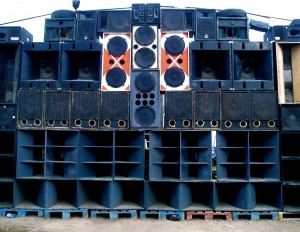 Today’s post is written by Geoff Twigg, Adjunct Professor at North Park University in Chicago. Geoff is a pastor, singer/songwriter, worship leader and ministry consultant, and serves the ECC as a member of the denomination’s Commission on Worship.
Today’s post is written by Geoff Twigg, Adjunct Professor at North Park University in Chicago. Geoff is a pastor, singer/songwriter, worship leader and ministry consultant, and serves the ECC as a member of the denomination’s Commission on Worship.
One of the most common questions that arises in discussions of our churches music and worship ministry is the matter of sound systems. I noticed a couple more conversations are under way in the Better Together Facebook group this week, and thought maybe it would be useful to write a few basic notes about the use of sound technology in our ministries. Please forgive me if this level of discussion is too basic, or if you have another philosophy in approaching the use of sound systems. Feel free to comment or criticize below.
There are at least three different ways of using sound technology in a live context. These might be described as follows.
1) A Transparent system
2) A Balancing system
3) A Production system
Confusion between these uses, and the misunderstanding or misuse of one trying to make it do something else, are often the cause of disputes between us.
The Transparent system is really there because people can’t hear. Sometimes called sound enhancement, it’s designed to make sure that whatever speaking or music is being presented, it’s represented as faithfully as possible further away. Obviously you want microphones and speakers that are accurate – not ‘coloring’ the sound in a way that makes it noticeably amplified – and therefore good quality elements are necessary.
A subset of this found in some older churches is the “Speech-quality” system, which is a set of mics and speakers that focus on the characteristics of the spoken word. Some people try to use this kind of system for music but the results are always horrible.
A Balancing system is the solution when you have a loud instrument (organ, or drum set, for instance) and you need to get the other contributors to a similar volume. It’s only supposed to set things right, not to add effects. Use this to get a really cool “unplugged” texture to your music.
A Production system is the kind of system that becomes an ‘instrument’ in its own right. This is what many people want when they are trying to emulate the sound of popular recorded music; it can add effects and change the sound of instruments and voices. In the right hands, a production system is a wonderful thing, but you really have to know what you’re doing.
Much of the equipment that’s readily available in local stores these days is designed for use in a Production system, and it carries implications and values that are hidden but powerful. It’s designed to make you look and feel like a Rock Star rather than a lead worshipper.
A little reference material.
Microphones are the way sound gets into a system. I like to think of them like light bulbs or flashlights. The kind that’s like a light bulb is often used (in pairs) for a choir; wherever the light would shine, the sound is picked up.
On the other hand, some mics are like a flashlight – you use them close, and where the beam would be brightest, the voice or instrument is picked up most efficiently..
Feedback occurs when the microphone can hear the sound coming out of the speakers. The squealing is produced by that sound going through the system repeatedly. Turn the speaker volume down, or (move or) point the mics away from the speakers to cure this problem.
Foldback is a system (separate from the sound system facing the listeners) that is set up to allow the musicians and singers to hear how they sound.
Amplifiers receive the signal from microphones and make the sound louder. They generally send their signal to speakers.
A mixer is necessary to take various signals from microphones and instruments, adjust them to sound musically balanced and send the result to the amplifier.


My good friend Geoff, sterling post… but what is called “foldback” in British English is termed “monitors” by we Yanks 🙂 Spot on mate! -Glenn
Report This Comment
06.10.12 at 6:22 pm